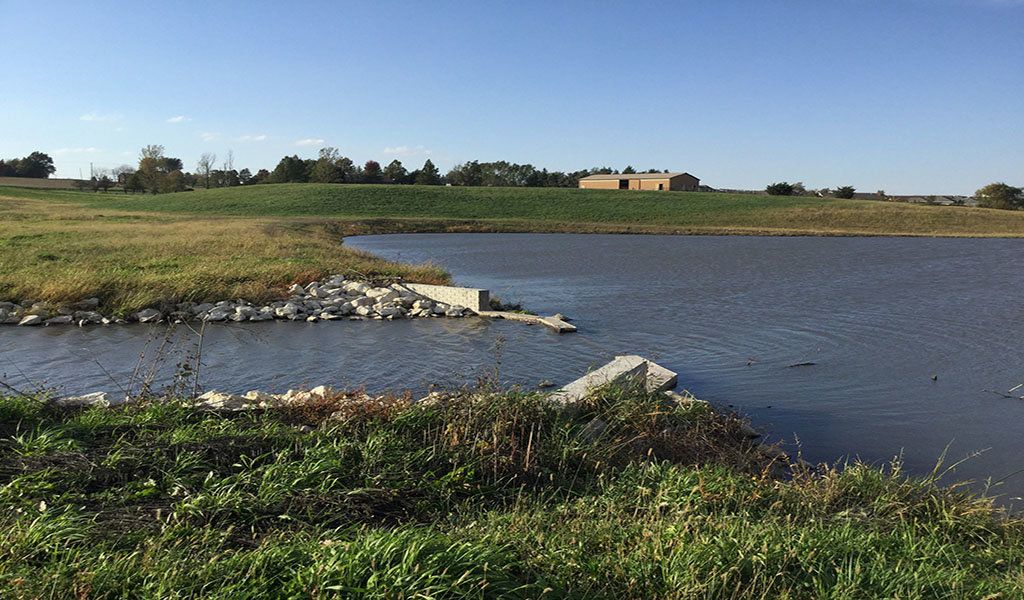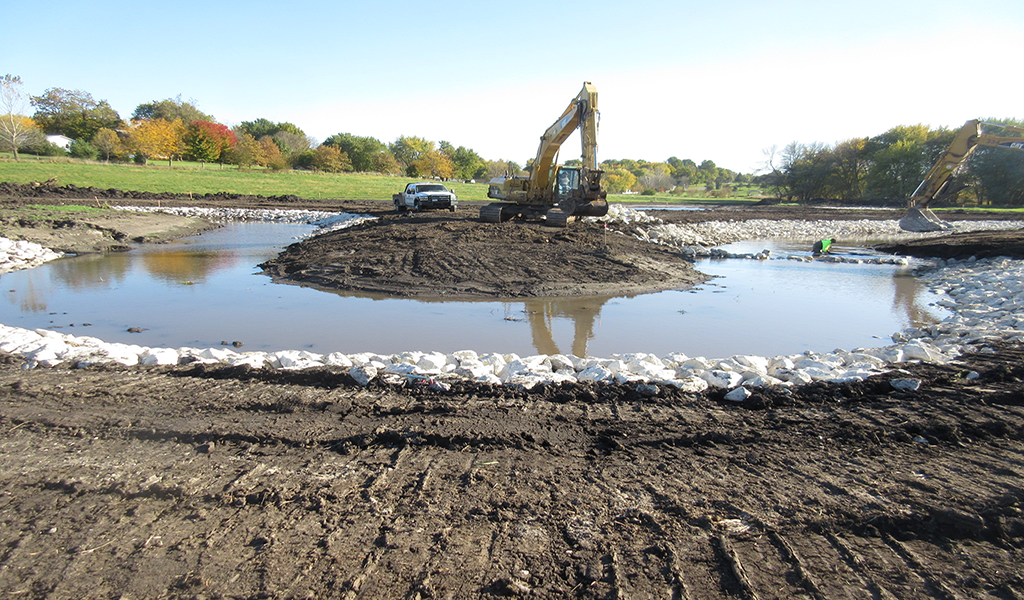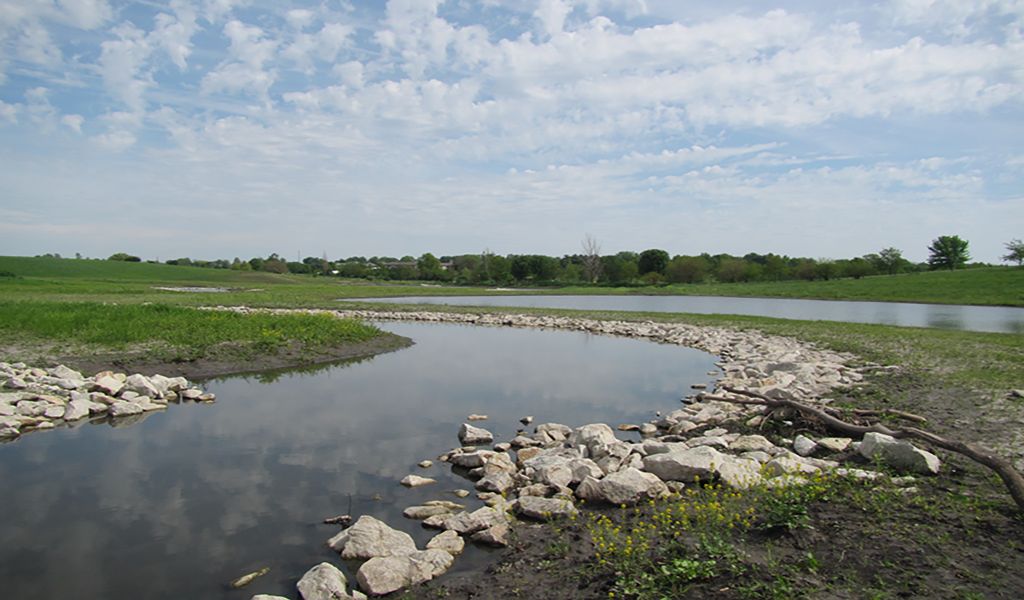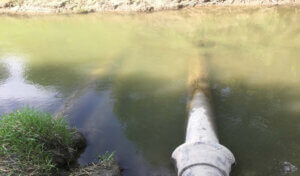
Impact of Community Development on Watersheds
Located on the western edge of Creston, Lake McKinley has suffered from siltation problems due to excessive erosion and other water quality issues that have impacted the community’s ability to make full use of this once valuable resource. To reverse these negative impacts, Creston city leaders partnered with the engineers and environmental scientists from Snyder & Associates to evaluate these quality problems and offer viable, long-term solutions.
As the primary feeder stream into Lake McKinley, Hurley Creek starts at the watershed’s northern border and flows through a dam just upstream of the Creston urban area. From there, the creek meanders southwest through Creston to drain into Lake McKinley. Residential and commercial development surrounding the creek’s path has progressed considerably in recent years. As this growth continues, the amount of impervious areas also increases, resulting in more water volume flowing into local streams and lakes. This increased runoff accelerates soil erosion, moving soil particles, organic materials, and other nutrients into receiving waters. As a result, these factors have decreased the water quality and depth at Lake McKinley, significantly degrading the aquatic environment necessary to sustain a healthy and productive lake.
Inlet Pond Pretreats Inflow and Reduces Pollutant Loading in Lake
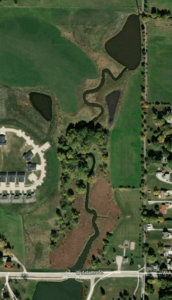
Aerial view of finished stream restoration and sediment basin located just above Lake McKinley.
After extensive testing and study, our team of engineers and environmental scientists proposed a sustainable and cost-effective conceptual layout. This plan was based on site conditions and water quality modeling and provided a vision for implementing improvements in phases and according to established partnerships and community support. Our recommended improvements considered valuable resources like wetland species and more significantly, included the addition of an upstream, pretreatment pool to reduce sediment and nutrient loading to the lake.
Utilizing vacant city land surrounding the stream, a two-acre pretreatment basin was excavated just north of the lake, followed by streambank stabilization efforts to reduce bank erosion and sediment loading into Lake McKinley. This integrated system contributes significantly to tackle two significant drivers affecting lake water quality and aquatic habitat — sediment and nutrient loading. As the water slows through the pretreatment basin, suspended sediment settles to the bottom so that cleaner water reaches the lake. Another auxiliary benefit of the targeted sediment removal area is improved accessibility for ongoing maintenance.
Nitrogen and phosphorus are the two most prevalent nutrients affecting Iowa’s waters, often overloading water resources and causing uncontrolled algae growth and other water quality problems. Significant increases in algae harm food resources and aquatic habitats while decreasing the oxygen that fish and other aquatic life need to survive. Environmentally designed ponds promote increased plant diversity that optimize nitrogen and phosphorus removal, thus reducing nutrient loading. The addition of the pretreatment basin also helps to increase the aquatic habitat diversity that supports thriving fisheries.
Water Quality Improvements Offer Sustainable, Long-Term Solutions
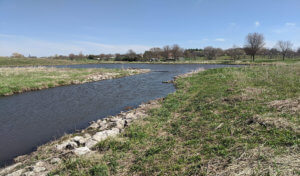
Hurley Creek leading into its new sediment pond.
Through the Hurley Creek Water Quality Project, our team of experts implemented a series of Best Management Practices (BMPs) in targeted areas, which reduced sediment delivery to the lake and improved water quality. As our team continues to monitor nearby wetlands, we’ve documented continual improvements resulting from the implemented measures.
This initiative highlights the significance of further watershed-wide water quality BMPs to continue improving highly-valued water resources. As Lake McKinley sustains these improvements, the community can look forward to the area regaining its position as a recreation hub for residents to enjoy and the creation of a safer and higher aesthetic value for the community as a whole.
